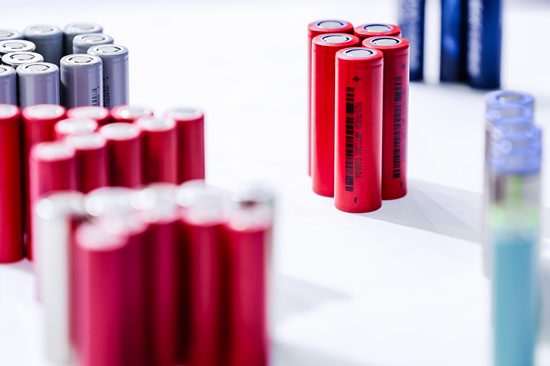Lithium-ion Battery C rate- Definition, Calculation, and Effects
Dec 25, 2019 Pageview:4676
Lithium is the lightest metal on earth with the most considerable electrochemical capabilities and provides the most significant specific energy per weight. Rechargeable lithium-ion batteries provide unique high energy densities that are sufficient enough to power the most advanced technological inventions such as the electric car. Lithium-ion cells are a safe alternative to lithium batteries with many advancements being made onto this technology to bring it closer to its best version. Users, therefore, need to understand the various functioning of these cells and how some of these variables can affect them as well as the batteries themselves.
What is the lithium-ion battery C rate?
Batteries can be confusing to their users most of whom only know about where and how specific ones are applied. Anything more profound or in detail may seem like less of a priority to them, and they thus tend to ignore such information with the view that it makes things more complicated for a normal cell. However, batteries are not all that strange or complex inventions that require you to program them to learn more about them. Every cell has markings and stickers that the original manufacturer expects you to identify and understand as they will help you choose the right pack and appropriately care for it.
The most common label or marking for all kinds of batteries is the C rating. It is derived from the famous Coulomb’s Law invented by Charles Augustin de Coulomb, a historian, and French physicist. A C-rate can be defined as the measure at which a battery is discharged relative to the maximum capacity of the cell. In other terms, it is the governing measure of at what current the intended cell is charged or discharged and how quickly that occurs. This is essential when trying to choose the best or most suitable battery for your device to avoid picking cells that can’t handle the current requirements.
Every battery has two types of C ratings which include Constant and Burst. With Constant, it deals with how fast the battery is capable of discharging at a constant rate until it’s empty. Examples of Constant can be identified in items or electric devices that use their cells for hours on end without stopping like drones or flashlights. On the other hand, Burst measures the amount of power a battery is capable of giving for a very small-time frame, or rather a few seconds, and still maintain its high voltage. Examples of such are RC airplanes taking off, igniting a vehicle, and airsoft guns.
How is lithium-ion battery C rating calculated?
The C-rate is a significant piece of information or data for any battery since the energy capacity in the cells depends on the speed of charge/discharge of current. In general, this means that you will have less energy density or capacity if you discharge in an hour as compared to when you discharge in 20 hours. This can also be explained when you charge a battery with a current of about 100A in an hour, giving you less energy capacity than if you used a current of 10A for 10 hours.
Most rechargeable batteries are rated 1C which means that a cell that is 1000mAh would supply 1000mA for about an hour if discharged at that C rating. If the same battery were rated 0.5C, it would therefore, be considered to provide 500mA for two hours on end. On the other hand, if the same battery were, however, rated 2C, the 1000mAh cell would supply 2000mA for about 30 minutes or instead half an hour. Such capacity is typically measured using a battery analyzer.
Sometimes the analyzer’s capacity readings are given in percentage of the nominal rating. For example, 100% is read if the 1000mAh cell can supply this current for about sixty minutes. However, if the battery only lasts for half an hour before the cut-off point, then 50% will be the value displayed. A brand-new battery is capable of providing more than 100% capacity sometimes. One can discharge a battery using the analyzer that allows you to set your most preferred C-rate and will portray a higher reading if the cell is discharged at a lower discharge rate and vice versa. However, you should be aware of the discrepancy in capacity readings on the battery analyzer with different C-rates, which is connected to the internal resistance of the batteries.
C-rate (C) = Charge or Discharge current in Amperes (A) / the battery’s rated capacity
Calculating C rating is therefore important for any battery user and can be used to derive the output current, power, and energy in the following way:
I = Cr * Er
Also
Cr = I / Er
Er = The rated energy stored in Ah?
I = The current of charge/ discharge in A
Cr = The C-rate of the cell
t = The duration of charge/ discharge
Calculating time of charge/ discharge
t = Er / I
What are the effects of C-rate on lithium-ion batteries?
Note that the higher the C rating on a battery, the faster the energy can escape the cells to power the various electronic devices. The C rating on any battery depends on its application because some electronics require large amounts of power supply thus need batteries with high C ratings while other devices can accommodate batteries with lower C ratings. A deficient C rated battery can be used in an alarm clock for example, which takes months to drain the cells completely. A high C rating can be used in igniting a vehicle for instance, where it only needs a few seconds to power the motors quickly.
Conclusion
The C-rate is a unit used to identify a current value for estimation or designating the expected and productive period of a lithium-ion cell under variable charge or discharge conditions. Since you have had a clear view of what the C rating is and what it stands for in a battery, you will need to include it in your next selection for cells to get the best out of what you settle for.
- Prev Article: Cylindrical Lithium Ion Battery
- Next Article: Lithium-ion Battery Comparison- Best Battery and Advantages
Leave Message
Hottest Categories
-
Hottest Industry News
-
Latest Industry News












